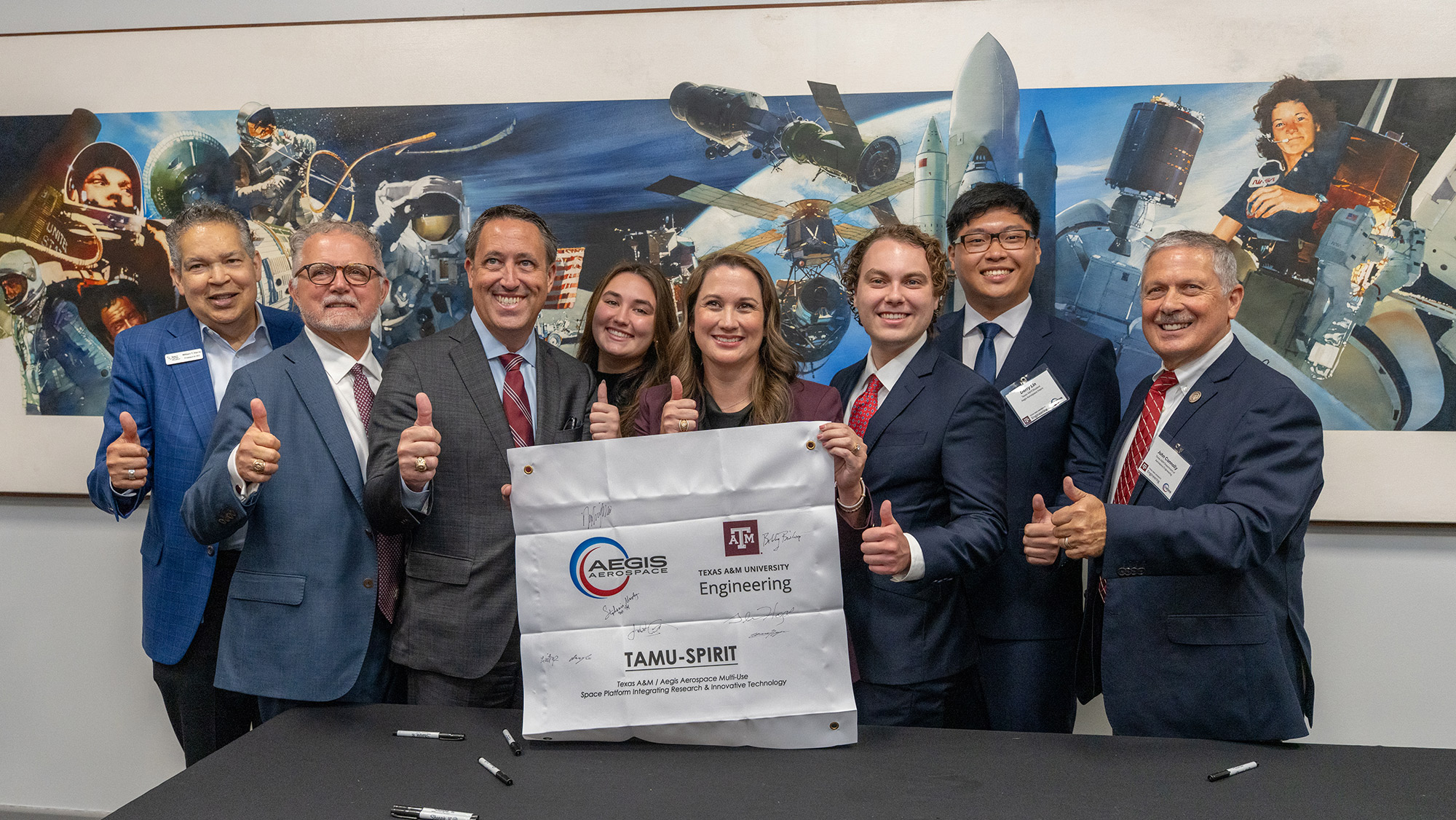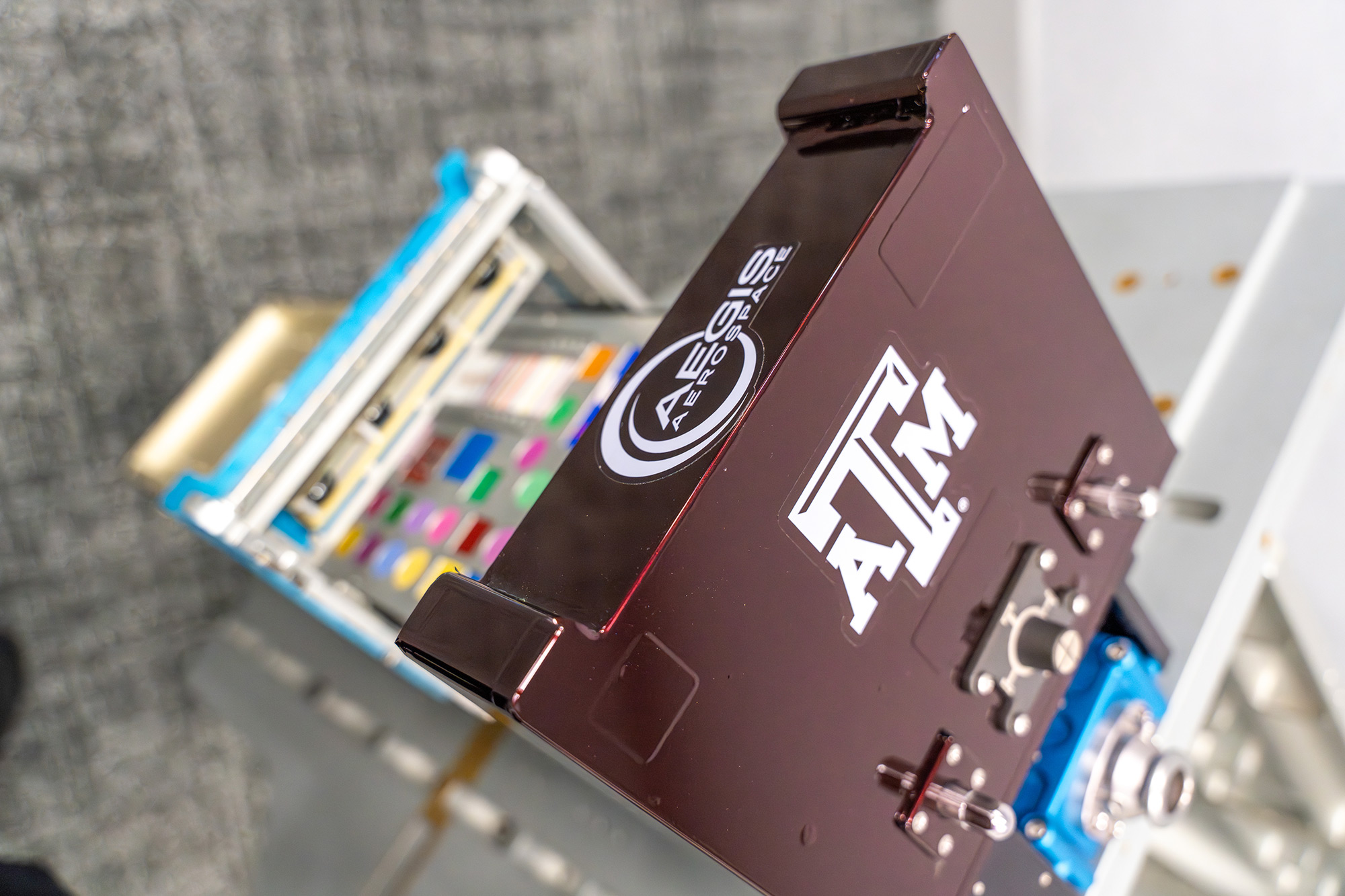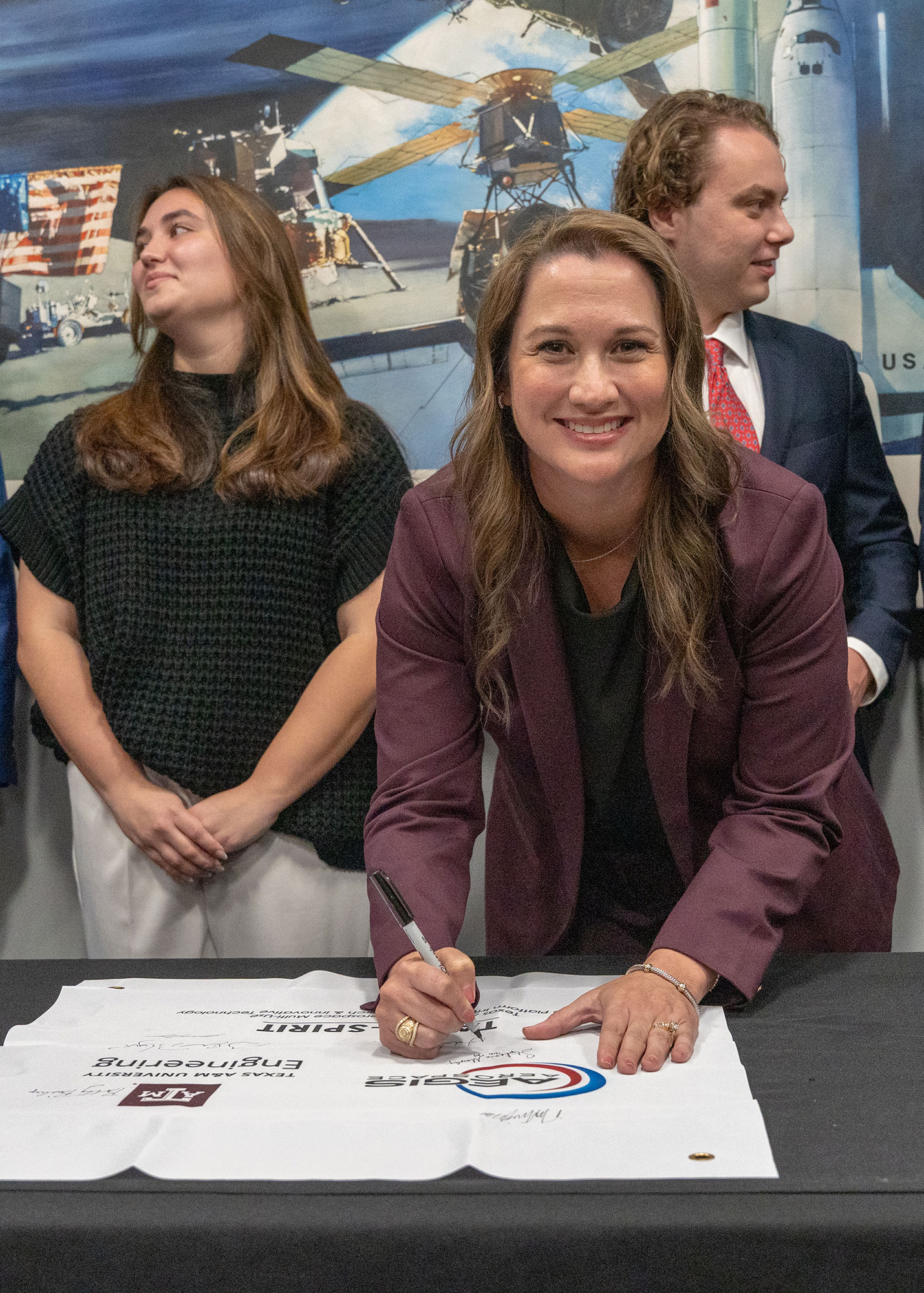
In an out-of-this-world celebration at Space Center Houston, Texas A&M University and Aegis Aerospace, Inc. leaders formally announced the Texas A&M/Aegis Aerospace Multi-Use Space Platform Integrating Research & Innovative Technology (TAMU-SPIRIT) facility and announced that research proposals from Texas A&M System institutions are now being accepted.
TAMU-SPIRIT is an external research platform on the International Space Station (ISS) designed exclusively for researchers from across the Texas A&M System. It will support a range of activities, including in-space research, testing, advanced materials manufacturing, robotics testing, space surveillance and tracking technologies. Texas A&M researchers will have priority access to send science, engineering and technology experiments to be installed on the TAMU-SPIRIT Flight Facility. TAMU-SPIRIT is supported by The Texas A&M University System, Texas A&M University, the Texas A&M Engineering Experiment Station, Aegis Aerospace and by Susan D. ’89 and Anthony J. Wood ’87 through the WoodNext TAMU Fund, a component fund of the Greater Houston Community Foundation. WoodNext is the sole private philanthropic supporter of this pioneering initiative.
“TAMU-SPIRIT is a first-of-its-kind flight facility that was designed for the kind of work being done by the scientists in our System,” said Texas A&M University System Chancellor Glenn Hegar. “This is a perfect example of what happens when we team up with visionary industry partners like Aegis Aerospace. Together, we’re putting our researchers at the forefront of exploration, even beyond our own planet.”
Following the ceremonial signing, Texas A&M System researchers are now invited to submit proposals for experiments from all disciplines for selection. Texas A&M System members conduct high-level multidisciplinary research, meaning that the selected experiments might come from fields not traditionally associated with space research, such as agriculture or zoology.
TAMU-SPIRIT is the perfect intersection of research, academia and industry partnerships. This facility strengthens our broader space initiatives, serving as a hub for testing new space technologies and equipment.

Selected experiments must fit into the pre-built science carriers that provide power and data storage. The experiment packages will be launched to the ISS in these science carriers and installed robotically on TAMU-SPIRIT outside in the vacuum of space. The flight facility can accommodate up to 12 science carriers at any time, positioned in orientations from deep space to Earth viewing. Science carriers will be returned to Earth for data analysis and post-mission processing, allowing researchers the rare opportunity to examine the effects of low-Earth orbit on their experiments.
“TAMU-SPIRIT is the perfect intersection of research, academia and industry partnerships,” said Dr. Robert H. Bishop, vice chancellor and dean of Texas A&M Engineering. “This facility strengthens our broader space initiatives, serving as a hub for testing new space technologies and equipment.”
Texas A&M’s partnership with Aegis Aerospace enables the development, integration, deployment and operation of the TAMU-SPIRIT Flight Facility. Aegis Aerospace Founder, CEO and Chairman Stephanie Murphy ’00, ’14 is a generous supporter of Texas A&M. Aegis Aerospace’s financial support for this project includes the system design, plus supplies and services needed to launch and operate Texas A&M’s science experiments, engineering research and technology demonstrations.
“As a graduate of Texas A&M, it is amazing to help provide researchers with access to such a unique facility,” Murphy said. “In-space science and R&D are transforming life on Earth, and I believe that TAMU-SPIRIT will not only accelerate that trend but lead to ground-breaking discoveries and new products. It’s exciting to boost Aggie research to such a high level.”
The TAMU-SPIRIT Flight Facility is modeled after the MISSE Flight Facility, a commercial flight facility designed and owned by Aegis Aerospace that has housed over 2,000 experiments since its launch in 2018. Murphy has agreed to contribute MISSE’s design to this project with Texas A&M. Construction of the new flight facility is expected to take approximately two years, with the first experiments targeted for launch in 2027.